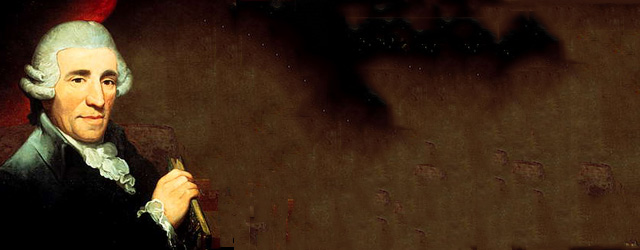This remarkable work was composed by Haydn while he was on his second visit to London in 1792.
It was initially prompted by a rivalry: Haydn’s former pupil Ignaz Pleyel had composed and performed a “sinfonia concertante” in London in early 1792, featuring a number of solo instruments set off against the orchestra. This musical form was very much in vogue in both Paris and London at the time. In response, the impresario and violinist Johann Peter Salomon, the sponsor of Haydn’s London concerts, asked Haydn to compose a similar work for an upcoming concert in two months.
Haydn set to work and composed this sparkling piece work in short order. It features a solo quartet (violin, ‘cello, oboe and bassoon), as well as a full symphony orchestra, in a combination of concerto and concerto grosso styles.
There are some unusual features: in the first movement the solo quartet enters in the midst of the orchestral theme, engaging the orchestral forces even before their own solo entrance.
The middle movement features chamber music among the soloists, and is almost conversational in style.
The last movement starts off as a conventional allegro, but is suddenly interrupted by a number of operatic recitatives played by the solo violin – in the London premiere by Salomon himself.
Sinfonia Concertante in B flat Major
Hob. I/105
Composed in 1792
By Franz Joseph Haydn






